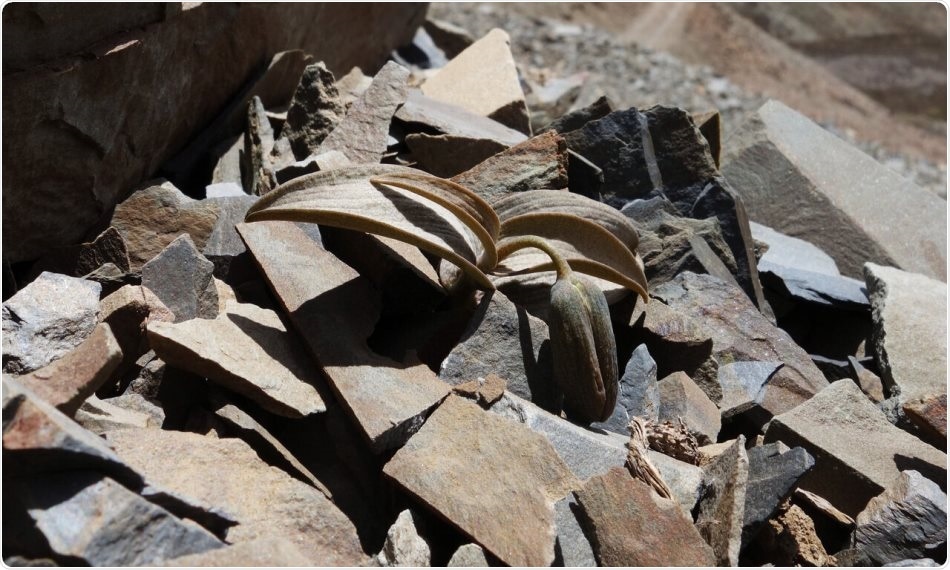According to a new study, a plant utilized in traditional Chinese medicine has emerged to become less perceptible to human beings.

Fritillaria delavayi in populations with high harvest pressure. Image Credit: Yang Niu.
Researchers discovered that Fritillaria delavayi plants, which thrive on rocky slopes of Hengduan Mountains in China, have backgrounds that match most closely to regions where they are profoundly harvested.
This indicates that humans are “driving” the evolution of this species into new forms of colors, because better-camouflaged plants are known to have a greater chance of survival.
The Kunming Institute of Botany at the Chinese Academy of Sciences and the University of Exeter performed the study.
It's remarkable to see how humans can have such a direct and dramatic impact on the colouration of wild organisms, not just on their survival but on their evolution itself.”
Martin Stevens, Professor, University of Exeter
Stevens works at the Centre for Ecology and Conservation on the University of Exeter’s Penryn Campus in Cornwall.
Professor Stevens continued, “Many plants seem to use camouflage to hide from herbivores that may eat them—but here we see camouflage evolving in response to human collectors. It’s possible that humans have driven evolution of defensive strategies in other plant species, but surprisingly little research has examined this.”
In the latest research work, the team assessed how different populations of plants closely matched their mountain surroundings and how easy it was to collect these plants. The researchers also interacted with the local population to estimate the amount of harvesting that occurred in every location.
They discovered that the camouflage level in the plants was associated with harvesting levels. The team performed a computer experiment in which people took longer to detect more-camouflaged plants.
The perennial herb—fritillaria delavayi—contains leaves that have different colors, ranging from grey to brown to green, at a young age. This herb produces only one flower annually after the fifth year.
In Chinese medicine, the bulb of the fritillary species has been used for over 2,000 years, and high cost in the recent past have resulted in increased harvesting.
Like other camouflaged plants we have studied, we thought the evolution of camouflage of this fritillary had been driven by herbivores, but we didn’t find such animals. Then we realised humans could be the reason.”
Dr Yang Niu, Kunming Institute of Botany
“Commercial harvesting is a much stronger selection pressure than many pressures in nature. The current biodiversity status on the earth is shaped by both nature and by ourselves,” concluded Hang Sun, a Professor from the Kunming Institute of Botany.
Source:
Journal reference:
Niu, Y., et al. (2020) Commercial harvesting has driven the evolution of camouflage in an alpine plant. Current Biology. doi org/10.1016/j.cub.2020.10.078.